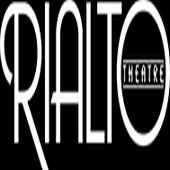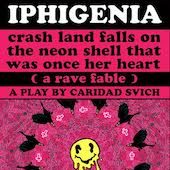Durham Fringe Festival 2025
There is a Light and a Whistle For Attracting Attention
Play Nicely Theatre

Venue: Fonteyn Ballroom, Durham SU
Festival: Durham Fringe Festival
Low Down
There is a Light and a Whistle For Attracting Attention is a theatre production by Play Nicely Theatre being presented at the Durham Fringe Festival 2025. The performance takes place in the Fonteyn Ballroom at Durham Students’ Union and has an approximate running time of 70 minutes. The story follows a woman influenced by traditional ideas about romance, tracing how she navigates expectations and writes her own path.
Review
Henri Merriam’s There is a Light and a Whistle for Attracting Attention is a solo work that unpacks identity, rejection, memory and myth through the lens of a collapsing relationship and a life on the edge. It is performed in the present tense, creating a sense of immediate presence and inner urgency. Merriam shifts across age, gender and psychological terrain with control, occupying each character with clarity. This is not just character work—it is the performance of thought, confusion and self-fragmentation rendered through voice, breath and posture.
Physically the performance is demanding and full bodied. At times breathless, the piece teeters on the threshold of being overwhelmed by its own speed, especially in the sections that move into hyper monologue, where ideas tumble relentlessly. These sections communicate panic, agitation and inner storm effectively, though some modulation of pace would create more contrast and offer the audience a chance to absorb the richness of the text. The performer is capable of holding silence, and using more of it could sharpen the moments of chaos and rage by giving space for them to land.
Thematically the play holds a mirror to psychological fracture. Gaslighting, self pity, the monstrous self, and the thresholds between emotional states are layered without didacticism. We are invited to make our own sense of a life that seems, at times, out of control but still held together by a fierce need for love and meaning. Biblical and mythic motifs recur—not as decoration but as structures beneath experience. There are references to Jekyll and Hyde, Gorgon Medusa, Adam and Eve, but these never feel imposed. They emerge naturally from a character trying to make sense of her place in a world that has misrecognised her.
A chest of drawers is the single set piece, serving both practical and symbolic roles. Drawers open to reveal objects and memories, but also suggest the inner compartments where parts of the self are stored away. The staging is economical but never sparse. The relationship between performer and props is carefully composed. This is staging as metaphor and memory.
Lighting and sound are handled with skill, but some of the intention behind the changes remains unclear. Certain lighting shifts appear to mark changes in memory or inner state, but the cues could be more defined in purpose. Sound cues are sharper, especially when aligned with the recorded male voice that serves as an offstage presence. That voice, however, feels emotionally disconnected from the live performance. If the intention was for it to sound flattened by memory, as if replayed from a trauma archive, then this needs to be made more evident. If it was meant to track the emotion of the onstage physicality, then it sits uneasily, not quite matching in tone or energy. Either way, its role could benefit from further refinement.
The use of a microphone on stage works effectively to mark character shifts. It also adds a layer of theatricality, reminding the audience of the performative nature of self and memory. The act of picking up and speaking into the mic is tightly choreographed. It avoids gimmick and enhances the transitions between internal and external voice.
There are moments of dry wit in the script, flashes of insight and linguistic play. The language is carefully written and mostly well delivered, though the more philosophical sections sometimes feel layered over the core of the piece rather than fully integrated. These moments hint at a writer thinking hard about what it all means, but sometimes that thought can be trusted to sit unspoken. Not everything needs explaining.
What stays with the audience is the central performance. Merriam does not ask for sympathy. She allows the character’s vulnerability to be visible without weakening the performance. Strength here is not volume or force but the willingness to show contradiction, pain and uncertainty. The chest of drawers becomes a quiet companion to that unfolding, reminding us that the past is not left behind, only placed in temporary storage.
This is not an easy piece to watch. It does not offer uplift or resolution, though there are the seeds of hope here and there. But it is so rigorously made, tightly performed and grounded in a lived experience that does not look away. It asks why we stay in the wrong places for too long. It asks how we survive ourselves. It is a stand-out show at Durham Fringe, for the detailed, nuanced, full-on performance of the actor who carries the script into a genuinely throttling and satisfying piece of narrative theatre. I still hold its mood, impact and troubling thoughts and inquiry in my heart.




























